Imagine stepping into your garden to find a charming rustic shelter that feels like an extension of your home—a cozy retreat where you can savor morning coffees, host intimate gatherings, or simply lose yourself in the beauty of nature. Whether you’re a novice just starting to explore outdoor design or a seasoned homeowner seeking to reinvent your space, this guide on rustic outdoor shelter ideas is your ticket to transforming your garden into a personal haven.
Our curated list offers not just inspiration but practical solutions tailored to elevate your outdoor living experience. With ideas that blend aesthetic allure with functional design, you’ll discover how easy it is to create a space that reflects your style and serves your needs. Prepare to unlock the potential of your garden and feel empowered to craft an outdoor area that’s not only beautiful but truly your own.
Incorporate Reclaimed Wood Features
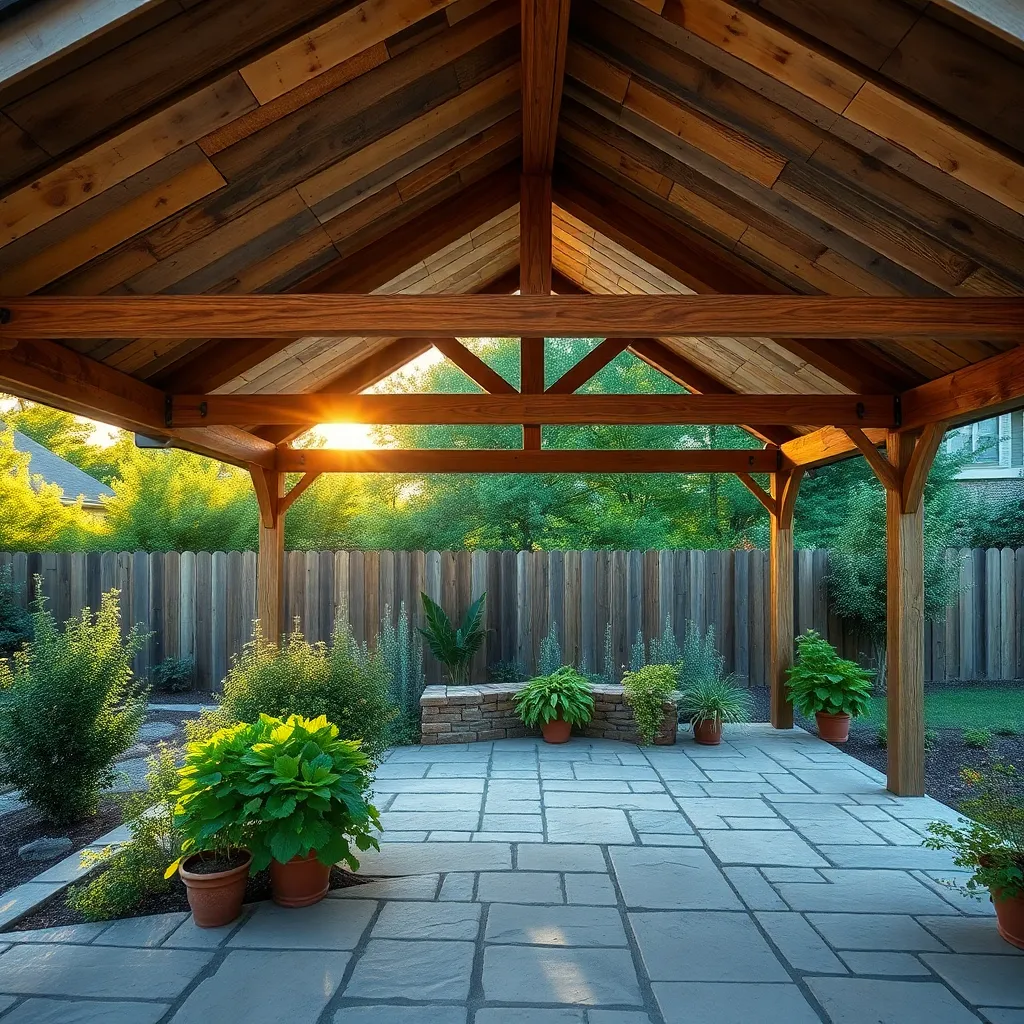
Incorporating reclaimed wood into your outdoor shelter can add a touch of rustic charm while promoting sustainability. Start by sourcing quality reclaimed wood from local salvage yards or online marketplaces. When choosing wood, ensure it is free of rot and pests and suitable for outdoor use. For a basic design, use reclaimed wood to create a simple pergola or canopy, with beams measuring around 4×4 inches for stability. Beginners can focus on straightforward projects like benches or tables, while more experienced DIYers might consider constructing intricate roofing patterns or feature walls.
To enhance the rustic appeal, emphasize the natural texture and color of the reclaimed wood by applying a clear sealant that protects against weathering while showcasing its character. Sand down rough edges to prevent splinters and ensure safety. Advanced enthusiasts can experiment with mixing different wood types for a unique look or even integrating metal elements for added durability. Remember to use galvanized or stainless steel fasteners to prevent rust, ensuring your shelter remains sturdy and weather-resistant for years to come.
Utilize Natural Stone Foundations
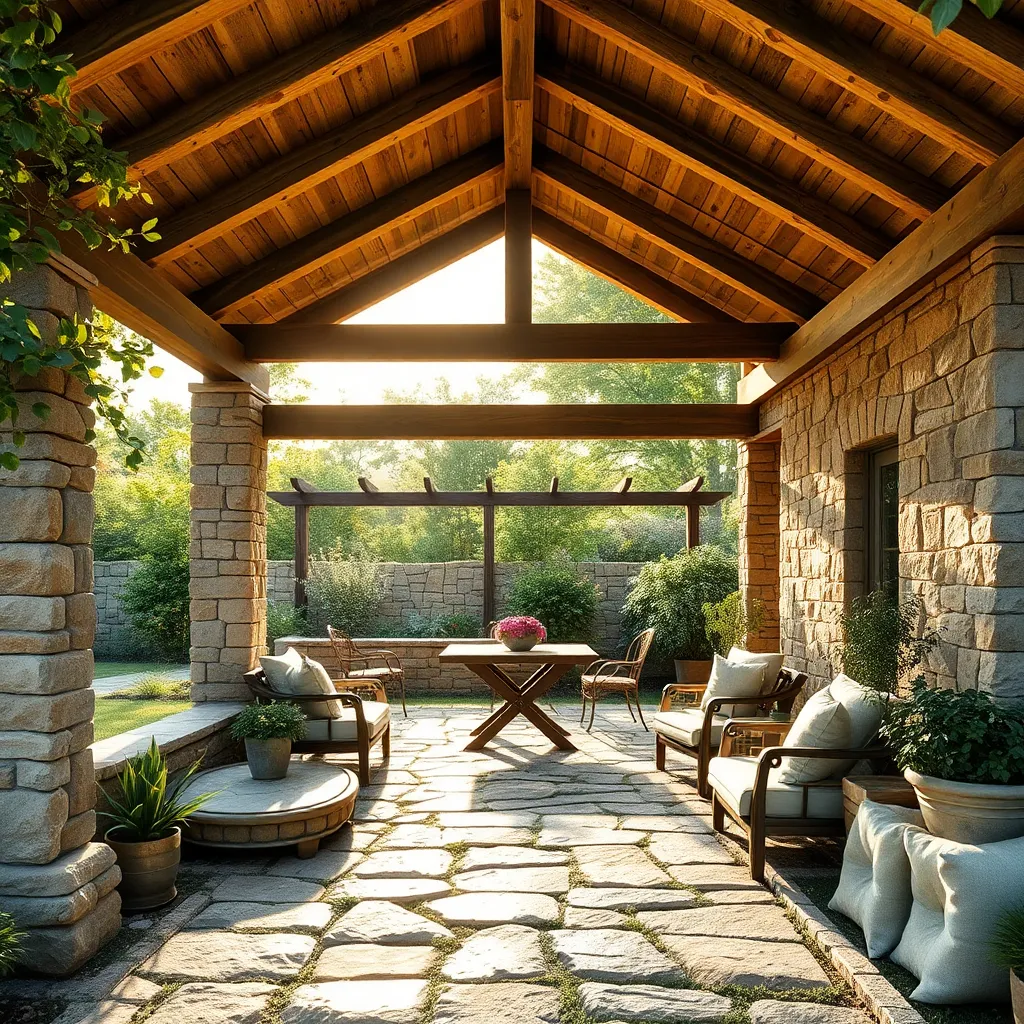
Using natural stone as a foundation for your rustic outdoor shelter not only enhances its durability but also adds a timeless aesthetic that blends seamlessly into a garden setting. Begin by selecting stones such as granite, limestone, or fieldstone that are both visually appealing and sturdy. For a simple start, arrange these stones in a dry-stack method, which requires no mortar and allows for easy adjustments. This technique is ideal for beginners and ensures proper drainage, thus preventing water damage over time.
More advanced builders might consider integrating stone pillars or walls into their setup for added structural integrity and a stunning focal point. Consider using larger stones for a bolder look, but ensure they are firmly set into the ground to prevent shifting. For an even more cohesive design, incorporate stone pathways or seating areas around your shelter. This not only ties the space together but also provides practical, weather-resistant surfaces that require minimal maintenance. With these techniques, your natural stone foundation will be both functional and visually captivating.
Add Vintage-Style Metal Accents
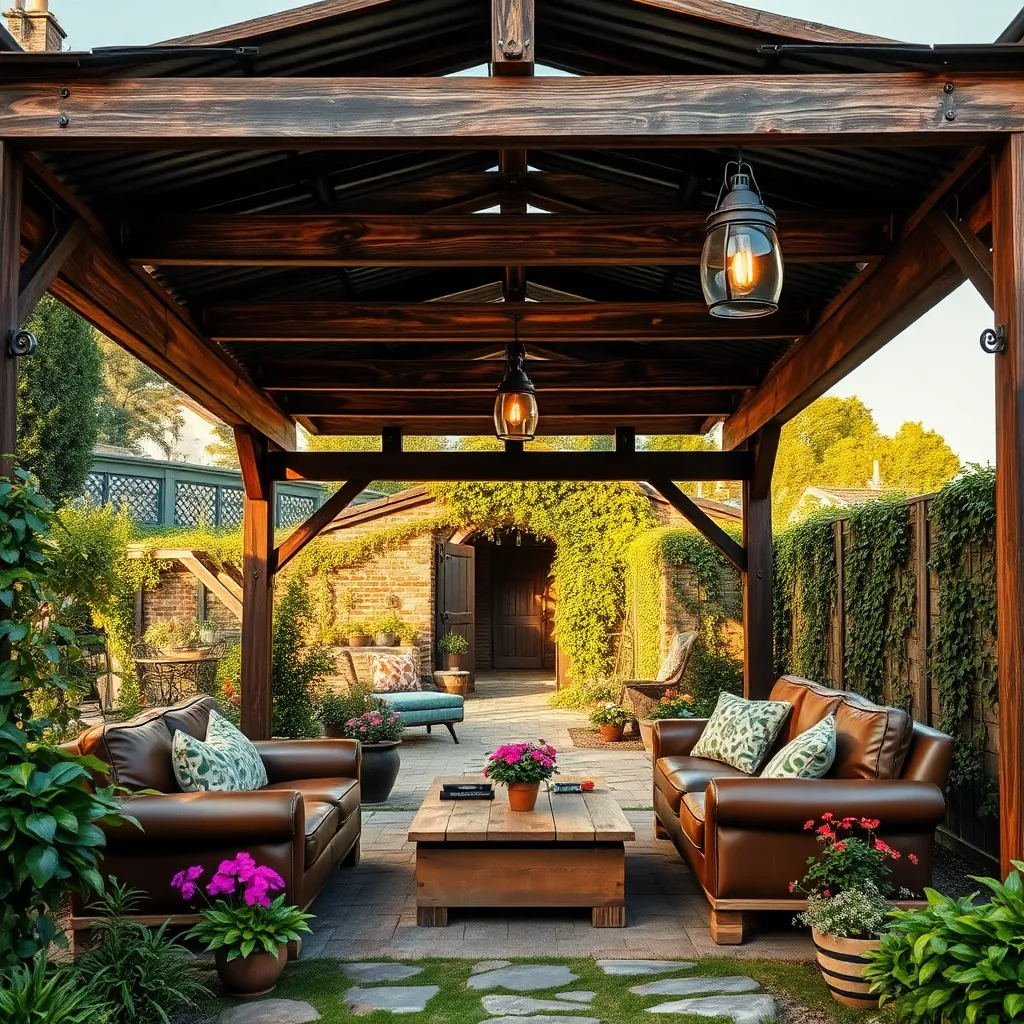
Incorporating vintage-style metal accents can bring a unique charm to your rustic outdoor shelter. Consider using materials like wrought iron, copper, or galvanized steel for elements such as support beams, decorative brackets, and hardware. These metals not only provide durability but also develop a beautiful patina over time, enhancing the shelter’s rustic appeal. For beginners, start with simple touches like metal hooks or lanterns, which can be attached to wooden beams or posts.
For those looking to dive deeper, try integrating custom metalwork like intricate lattice panels or embossed sheets for walls or roofs. Ensure that all metal components are treated for weather resistance to prevent rust and deterioration. Advanced DIYers might consider crafting their own unique designs or repurposing antique metal pieces for added historical flair. Remember, the key is to blend these metal accents seamlessly with natural elements, like wood and stone, to maintain a cohesive and inviting outdoor space.
Choose Earthy, Neutral Color Palettes
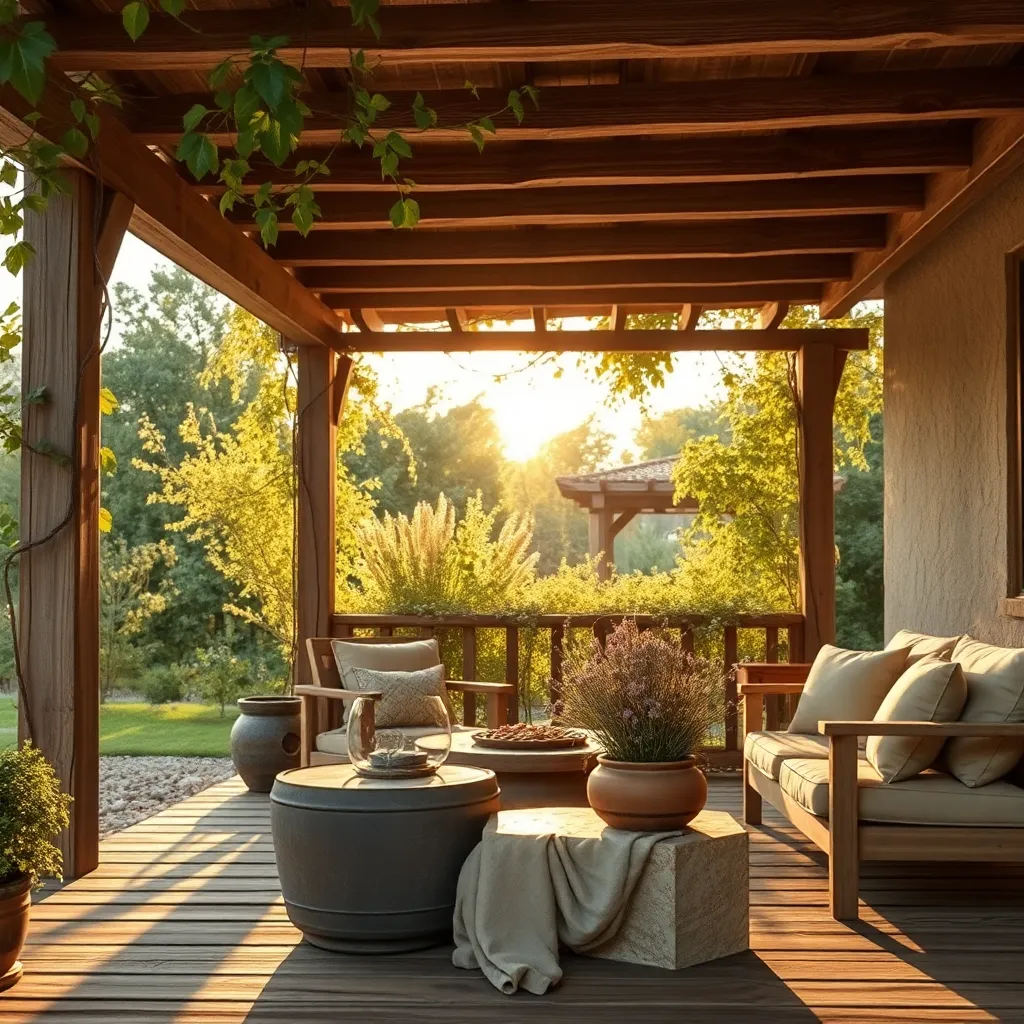
When choosing colors for your rustic outdoor shelter, opt for earthy, neutral palettes to complement the natural surroundings. Consider shades like soft browns, muted greens, and gentle grays that blend seamlessly with the environment. These colors not only create a calming and welcoming atmosphere but also ensure your shelter feels like a natural extension of your garden. For beginners, using weather-resistant outdoor paints or stains is a simple way to achieve this look while protecting your structure from the elements.
For those looking to add depth and character to their shelter, incorporate natural materials such as reclaimed wood or stone, which inherently carry earthy tones. Advanced gardeners might experiment with different textures, such as mixing smooth stones with rough-hewn wood, to add visual interest. To enhance the rustic charm, consider using linen or burlap fabrics for accents like cushions or curtains. These materials not only tie the color palette together but also add comfort and warmth to your outdoor space.
Integrate Climbing Plants for Shade
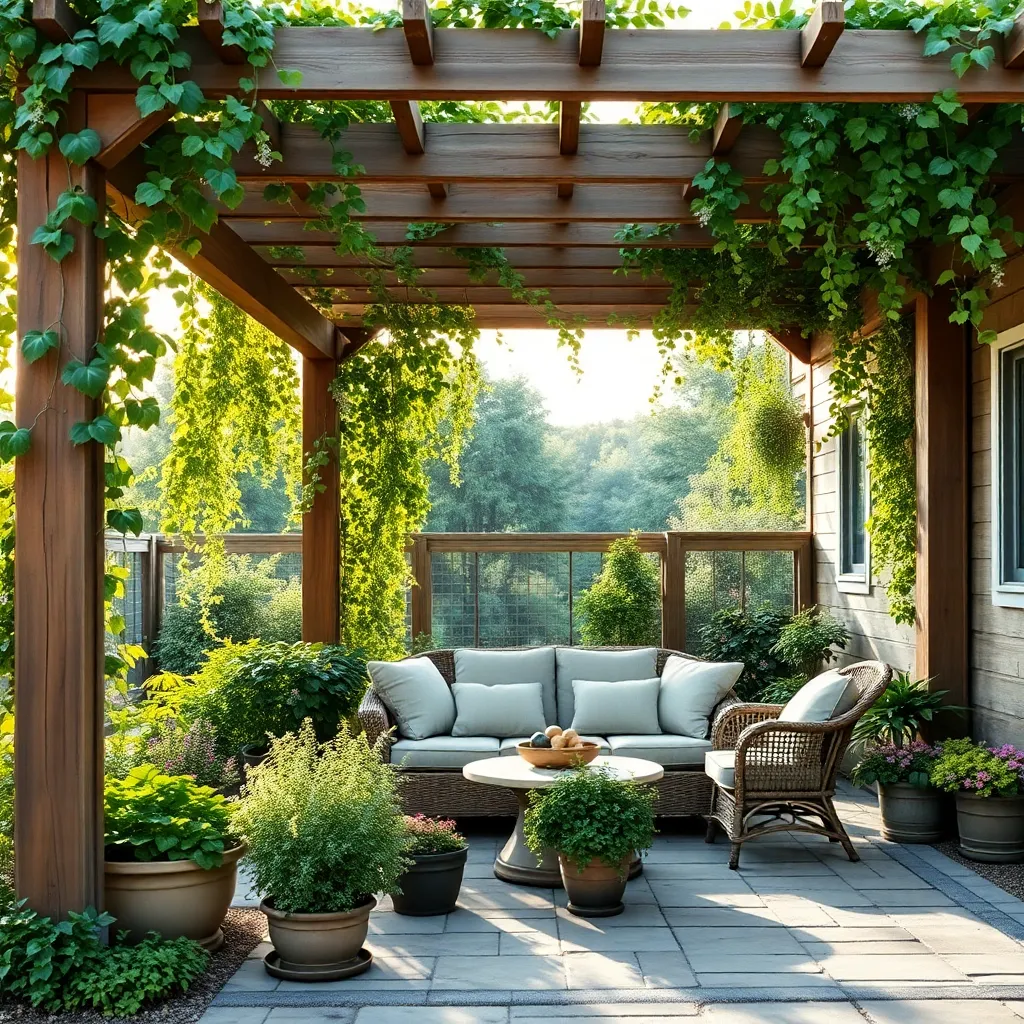
Consider using climbing plants like wisteria or clematis to provide a natural, rustic shade for your outdoor shelter. Begin by installing a sturdy trellis or pergola, ensuring it’s made from durable materials such as cedar or treated wood to withstand the elements. Position the structure strategically to support the growth of your chosen climbers, allowing them to form a lush canopy over time. This not only enhances the aesthetic appeal of your shelter but also offers a cooling effect during hot summer days.
For beginners, start with fast-growing varieties like honeysuckle, which requires minimal maintenance and provides quick coverage. More experienced gardeners might consider weaving together different species for a multi-layered look and added texture. Ensure proper spacing and support for each plant, allowing them to thrive and intertwine artistically. Regular pruning will help in directing growth and maintaining a tidy appearance, turning your shelter into a charming, natural retreat.
Conclusion: Creating Beautiful Outdoor Spaces
In exploring ‘Rustic Outdoor Shelter Ideas for Your Garden,’ we’ve uncovered the beautiful parallels between nurturing a garden sanctuary and cultivating flourishing relationships. First, we saw how creating a cozy, inviting space can foster deeper connections, much like a rustic garden nook invites intimacy. Second, we learned the importance of adaptability, showing that weathering storms together strengthens bonds. Third, embracing simplicity reminds us of the beauty in straightforward, honest communication. Fourth, incorporating nature reflects how grounding relationships can blossom with authenticity. Finally, we acknowledged the power of personalized touches, mirroring how small gestures can significantly nurture love.
As an actionable next step, take a moment to assess your own relationship ‘garden.’ Identify one area where you can incorporate these insights, whether it’s planning a simple outdoor date or starting an open conversation. Remember, every small effort contributes to a flourishing partnership.
To continue your journey of growth, save or bookmark this article for easy reference. Let it serve as a guide to revisit whenever you need inspiration. Looking forward, remember that with care and intention, your relationships can thrive as beautifully as the most lush, rustic garden sanctuary. Keep nurturing and watch your connections grow into lasting, robust bonds.
